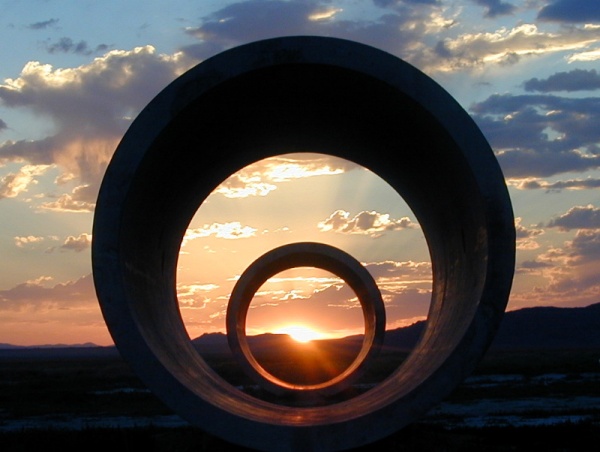Nancy Holt (1938–2014)
From Spiral Jetta: A Road Trip through the Land Art of the American West by Erin Hogan:
The morning after my Spiral Jetty foray, I was ecstatic. So far I was doing exactly what I had set out to do. I had left Chicago with some trepidation, but I had pushed through 1,664 miles and hit my first landmark. Flush with success, I spontaneously decided to try and find Nancy Holt’s Sun Tunnels (1976). Holt was Smithson’s wife, an artist in her own right, who shared his drive to marry the natural world with the personal artistic statement. The Sun Tunnels are four giant concrete tubes (eighteen feet long and about nine feet in diameter) in the middle of nowhere, positioned such that at dawn and sunset on the summer and winter solstices, the sun rises and sets in alignment with the tubes; they perfectly frame the sun. At other times, holes in the sides of the tubes form constellations in their interior when the sun shines through them.
I liked the idea of this temporal precision—and the uncertain nature of the work’s existence for the thousands of minutes every year that it isn’t registering those specific astrological alignments. Like Spiral Jetty, the Sun Tunnels are about time in its broadest sense, but while Spiral Jetty undergoes a constant process of evolution, the Sun Tunnels, with their exact and limited focus, are kind of worthless; they exist only as an idea most of the year. This seemed a productive combination of site-specificity and conceptual art, a work that asks the question of whether an idea is enough and of how “relevant” a work has to be throughout the duration of its life.
***
“When you’re alone in the desert, you’re ageless, timeless. You start to lose a sense of being contained in your body.”—Nancy Holt
